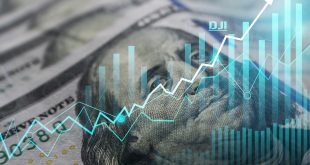Gold prices experienced significant volatility on May 21, 2024, as they corrected lower after touching an all-time high of $2,450 on the previous trading day. The pullback was driven by central banks’ communication regarding their reluctance to lower interest rates. In this article, we’ll delve into the factors influencing gold prices and analyze the technical outlook for XAU/USD. Gold futures are up +0.31%, trading at $2,432.10 per ounce, and spot gold is up +0.25%, trading at $2,433.16 at the time of writing.
Central Banks’ Reluctance, Geopolitical Concerns Create Rate Dilemma
Central bank policymakers worldwide expressed caution about lowering interest rates. The precious metal tends to perform poorly in an environment of higher interest rates due to the attractive returns investors can obtain by remaining in cash or bonds. On Monday, Federal Reserve Bank of Cleveland President Loretta Mester stated that the Fed could even raise rates if inflation rose. The expectation of three rate cuts this year was deemed “no longer appropriate.”
Geopolitical Forces
Despite the interest rate concerns, persistent geopolitical tensions acted as a positive counterweight for gold prices. Conflicts in the Middle East and Ukraine contributed to uncertainty, prompting investors to seek safe-haven assets. Emerging markets and BRICS nations’ central banks continued to hoard gold as an insurance policy against Western sanctions, which typically target USD or EUR reserves.
Technical Outlook: Shooting Star Pattern
On Tuesday, gold price (XAU/USD) retreated from its all-time highs, currently hovering around the $2,420s. The price action was influenced by a specific candlestick pattern observed on the daily chart. A Shooting Star Japanese candlestick pattern formed on Monday, indicating potential bearish momentum. This pattern occurs when the price reaches a new high and then retreats to close near its low. Following a strong uptrend, a Shooting Star is considered a bearish sign.
Potential Correction
The significance of the Shooting Star depends on Tuesday’s price action. If Tuesday ends as a red down day, it could signal a deeper correction. However, if it ends as a green bullish day, the bearish implications of the pattern may diminish, suggesting that the dominant bullish trend is more likely to continue.
Gold prices faced headwinds due to central banks’ reluctance to lower interest rates. Geopolitical concerns provided some support, but technical patterns signaled a potential correction. Traders and investors should closely monitor price movements and central bank communications to navigate this dynamic market. Let’s delve deeper into gold price expectations for the second half of 2024 based on expert forecasts:
J.P. Morgan’s Outlook:
Initially, J.P. Morgan foresees gold retreating from recent highs while interest rates remain elevated. However, they anticipate the US Federal Reserve (Fed) to start cutting rates later in the year.
Central banks worldwide are also likely to continue buying gold, supporting demand for the precious metal. China, in particular, remains a significant steady buyer.
UBS’s Perspective:
UBS, another major investment bank, shares a similar logic. They expect interest rates to start rising over the course of the year. Despite this, UBS believes that gold prices will stay robust.
Overall Sentiment:
Falling yields and geopolitical tensions are expected to drive gold prices to new highs in the second half of 2024. While short-term fluctuations may occur, the underlying factors, including central bank demand and interest rate dynamics, suggest a positive outlook for gold..
 Noor Trends News, Technical Analysis, Educational Tools and Recommendations
Noor Trends News, Technical Analysis, Educational Tools and Recommendations





